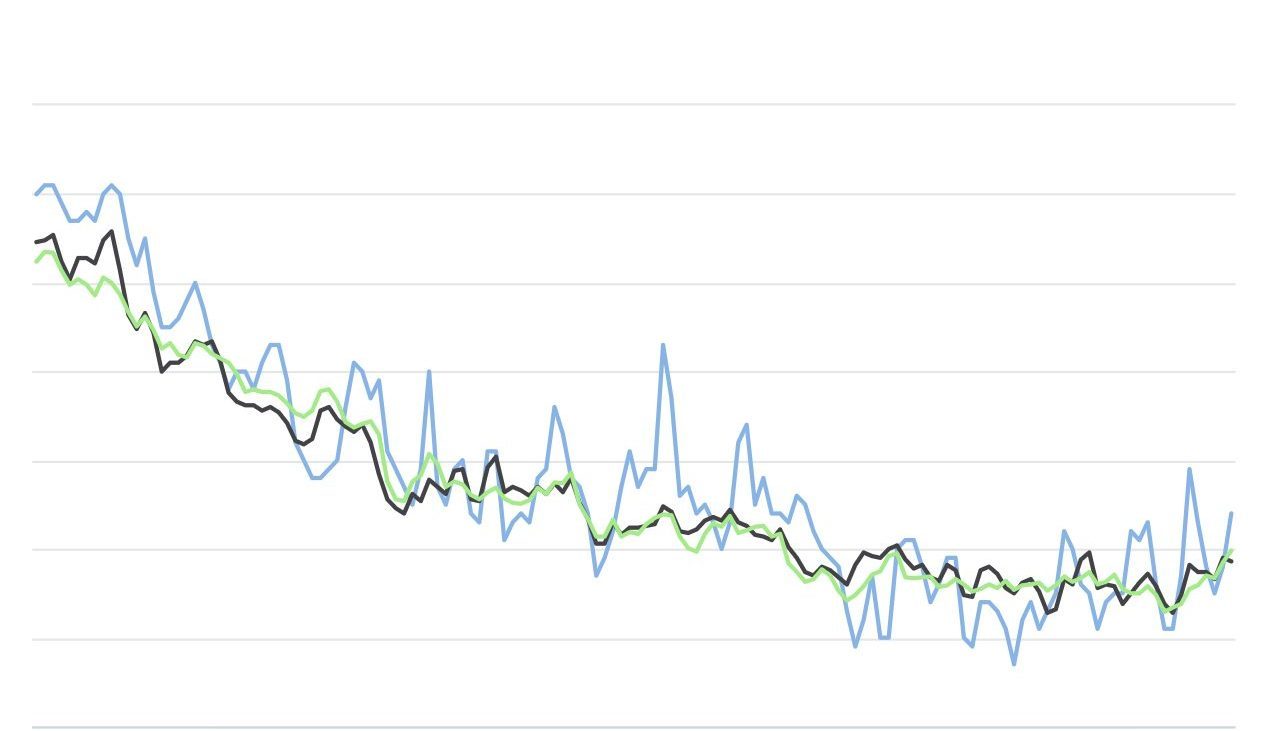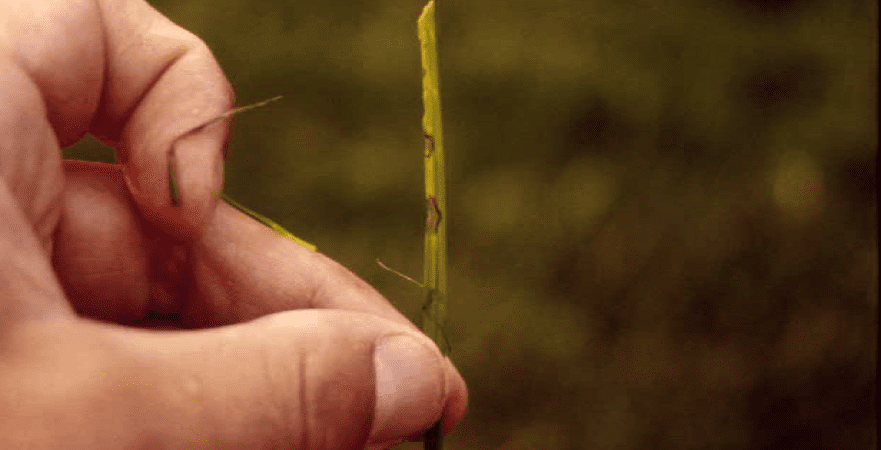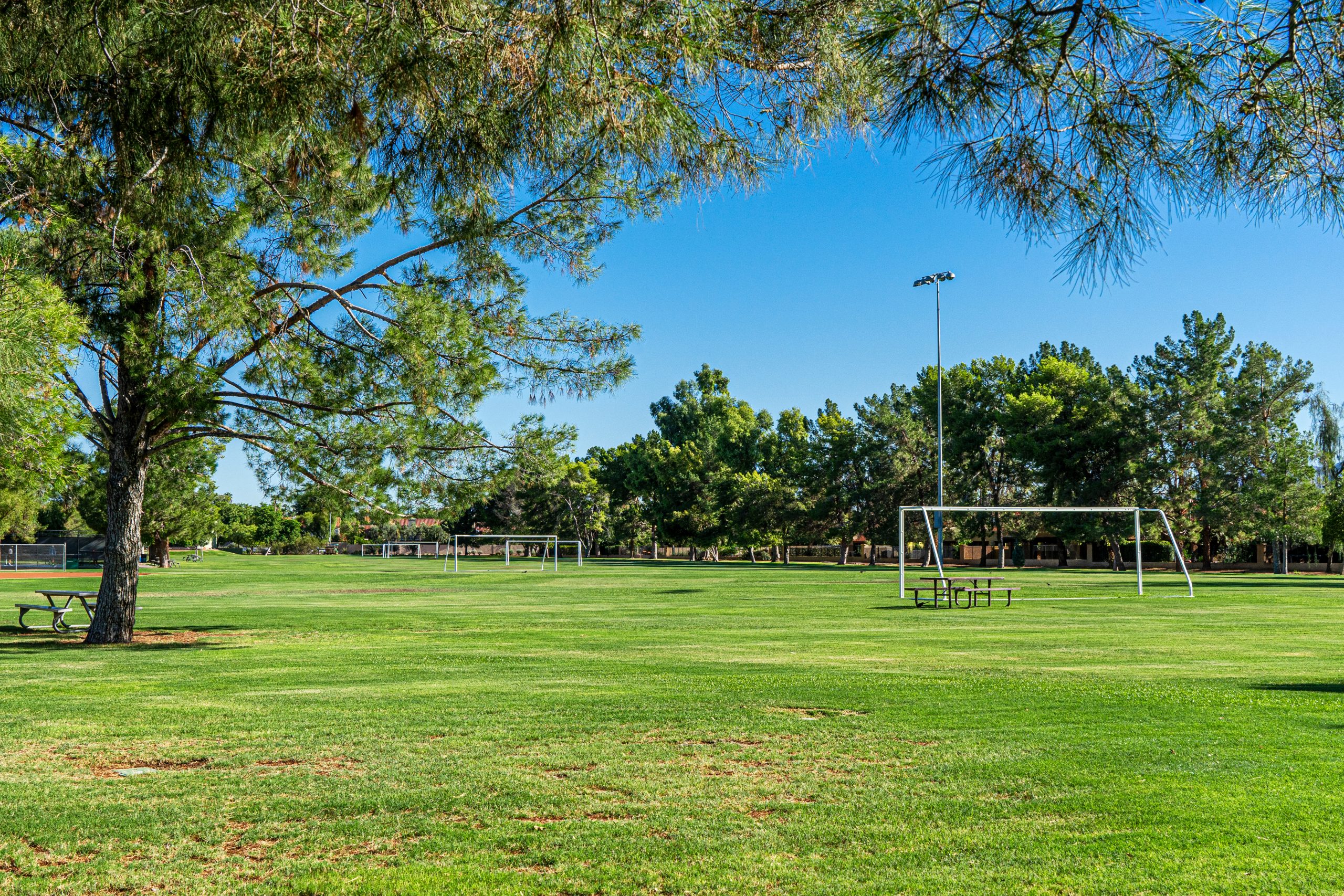The last few years have felt like the Bill Murray movie Groundhog Day. The growing season is getting later and staying warmer. Spring is slow to warm up, and then we jump straight into 90-degree days. Spring’s first sunny day of 50 degrees brings golfers knocking on the pro shop door, soccer moms wanting little Johnny to dribble the ball on pristine turf, and landscapers receiving phone calls about when crabgrass applications will go down. It’s a vicious cycle that nobody likes—except for broadleaf weeds.
The longer growing season has given broadleaf weeds a competitive advantage because they can photosynthesize much more throughout the winter to sock away carbohydrates. Your eyes aren’t deceiving you as you drive around town. Yards, ditches, parks, and golf courses have been much greener at the start of recent winters.
The photos below show broadleaf weeds thriving in early winter.
Also, the soil temperatures are much higher than the 5-year and ten-year averages. Take a look at the chart below, showing the differences.
Broadleaf weed control is one of the top complaints from landscapers, golf course greenskeepers, and sports fields managers. White clover, knotweed, ground ivy, and plantain are the species that come to mind for many in the industry.
Fall will always be the best time to control broadleaf weeds, but the trend is moving toward needing multiple applications throughout the year. Longer growing seasons mean healthier, bigger weed plants with denser root systems. A larger weed requires more active ingredient to treat. The concept is similar to human medicine: An adult needs a larger dose than a child with less mass.
Use a chemistry with an active ingredient that isn’t as common. Getting away from the traditional three-way herbicide mix has benefited a lot of turfgrass managers. Below are a few chemistries that have novel, underused active ingredients.
- Dismiss NXT contains active ingredients sulfentrazone and carfentrazone.
- Tetra has the new active ingredient flumioxazin present.
- GameOn uses the new active ingredient halauxifen-methyl.
Below is a photo of a spray demo with GameOn herbicide. It was applied in 95-degree heat on this basin. Notice how healthy the remaining bluegrass/ryegrass is and how dense the clover/plantain stand is three weeks after the initial application. This could very well be the best broadleaf herbicide on the market.

Have an open mind about new methods to manage broadleaves in this changing environment. As always, your sales representative will be happy to help you brainstorm solutions.













